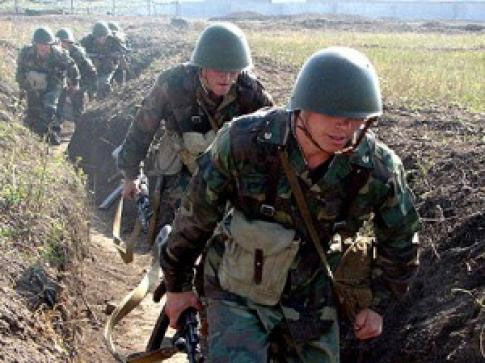
Armenian armed forces have resumed shelling of Azerbaijani positions along the line of contact, head of the press service of the Azerbaijani defense ministry Vagif Dargahli told Trend Apr. 4.
“On the night of Apr. 4, the situation on the contact line deteriorated again,” he said. “Despite the fact that on Apr. 4 morning the situation somewhat stabilized, the enemy renewed shelling of our positions using heavy artillery again, including the settlements in Azerbaijan’s Aghdere, Khojavand, Aghdam and Terter districts. Azerbaijani armed forces returned the fire at the enemy.”
On the night of Apr. 2, all frontier positions of Azerbaijan were exposed to heavy fire from large-caliber weapons, mortars, grenade launchers and guns. In addition, Azerbaijani settlements near the frontline densely populated by civilians were shelled.
The counter-attack was made following provocations of the Armenian armed forces at night of Apr. 2, which resulted in deaths and injuries of civilians.
Six Armenian tanks, 15 gun mounts and reinforced engineering structures have been destroyed and more than 100 servicemen of the Armenian armed forces were wounded and killed during the shootouts.
Twelve servicemen of the Azerbaijani armed forces heroically died, one Mi-24 helicopter was shot down and one tank damaged by a mine.
The conflict between the two South Caucasus countries began in 1988 when Armenia made territorial claims against Azerbaijan. As a result of the ensuing war, in 1992 Armenian armed forces occupied 20 percent of Azerbaijan, including the Nagorno-Karabakh region and seven surrounding districts.
The two countries signed a ceasefire agreement in 1994. The co-chairs of the OSCE Minsk Group, Russia, France and the US are currently holding peace negotiations.
Armenia has not yet implemented the UN Security Council’s four resolutions on withdrawal of its armed forces from the Nagorno-Karabakh and the surrounding districts.
Trend
